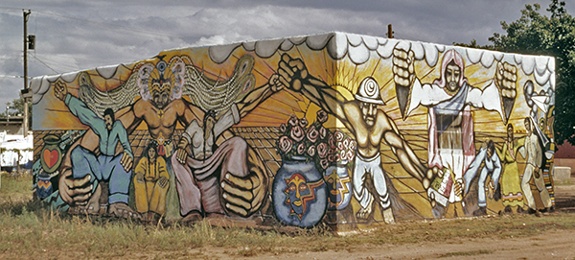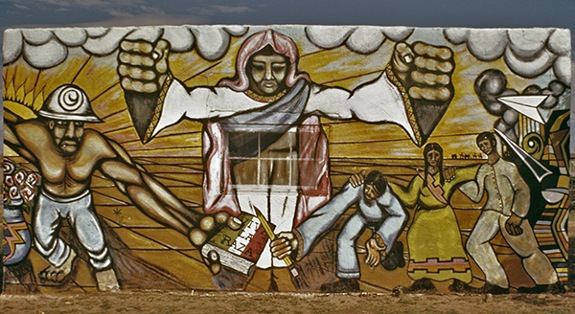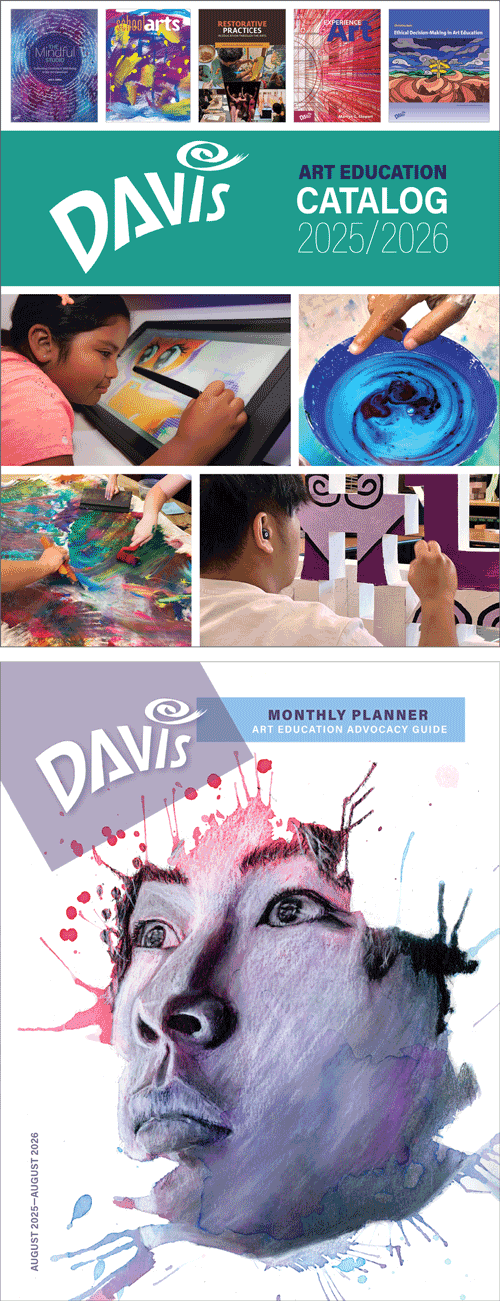Hispanic Heritage Month: Artes Guadalupaños de Aztlán
In case you have any doubt that the heritage of ancient cultures from Central and South American has endured to the present day, all one has to do is look at the influences of ancient art on contemporary Latinx artists. In the 1900s, the influence of ancient Central and South American art began appearing in artists’ work throughout the Western hemisphere, particularly in the Mexican Mural Movement that developed in the 1920s. Although I’ve mentioned Artes Guadalupanos de Aztlán in a previous post, I think it bears repeating because it was a revolutionary artists’ group that produced murals in the American Southwest and West.
 |
| Artes Guadalupaños de Aztlán (active 1971–1977, Sante Fe, New Mexico), Saint Francis Drive Mural, Santa Fe, New Mexico, 1972. Photo by Eva Cockcroft. Image © 2024 Davis Art Images. (8S-20358) |
The amazing history of Latinx art and its importance to American art in general continues, stronger than ever, to the present day. The Latinx mural movement of the 1970s was an important descendant of the Mexican Mural Movement that emerged after the Mexican Revolution (1910–1917). The Latinx artists of the 1970s and beyond contributed a significant percentage of mural art during the late-1900s mural movement that swept American cities. Naturally, their murals address both the indigenous history of Americans of Hispanic descent and contemporary Latinx cultural issues.
The Saint Francis Road Mural was painted on four sides of a building in Santa Fe, New Mexico. It represents the work and achievements of Mexican Americans from the ancient past to the present. The left side of the mural shown above presents contemporary Latinx men and women embraced by the ancient Mexican god Quetzalcoatl, distinguished by the plumes of the quetzal bird and snake headdress (the feathered serpent, the god's familiar).
 |
| Artes Guadalupaños de Aztlán, Long Live the Race (People), from Saint Francis Drive Mural, Santa Fe, New Mexico, 1972. Photo by Eva Cockcroft. Image © 2024 Davis Art Images. (8S-20359) |
This side of the mural, called Long Live the Race (People), is unusual because diaphanous material was used to continue the mural over the window, avoiding painting the window shut. This represents an angelic force empowering contemporary Hispanics to embrace the dual positives of hard work (the hard hat) and education (the folks grabbing a giant pencil).
The mural movement in the United States in the late 1960s and early 1970s was influenced by the post-Mexican Revolution Mexican Mural Movement of 50 years earlier. The goal of the American public art movement was to vocalize social and political concerns pictorially, enhance depressed neighborhoods with beautiful art, and empower the members of those communities by encouraging their participation in mural projects. It has been variously called contemporary mural renaissance, people's art, or simply street art. Hundreds of large-scale wall paintings in a dozen major cities in the United States and Canada were produced during that time.
The Mexican American Movement arose at the same time as the Civil Rights Movement for African Americans. It grew partly from the success of the organization of the United Farmworkers of America in 1962 and continued into the late 1960s. The movement increasingly focused on the injustices and inequality in American society for a variety of minority groups, including Latinx Americans.
Artes Guadalupaños de Aztlán was founded by three artist brothers, Samuel, Albert, and Carlos Leyba, in Santa Fe, New Mexico, Their fourth artist brother, George, had died of a heroin overdose, a common problem in the Latinx community at the time. Many of the murals of Artes Guadalupaños de Aztlán reflect the "Brown Power" movement, and its efforts to educate and uplift Latinx Americans, much in the way the murals of Diego Rivera (1886–1957) and other Mexican artists had done in Mexico after the Mexican Revolution.
Correlations to Davis programs: Explorations in Art 2E Grade 6: 3.4; Experience Art: 3.2 p. 124, 7.1 p. 284; A Personal Journey 2E: 4.4; A Community Connection 2E: 7.4 Studio Time; A Global Pursuit 2E: p.66; The Visual Experience 4E: 11.9; Experience Painting: chapter 8

Comments